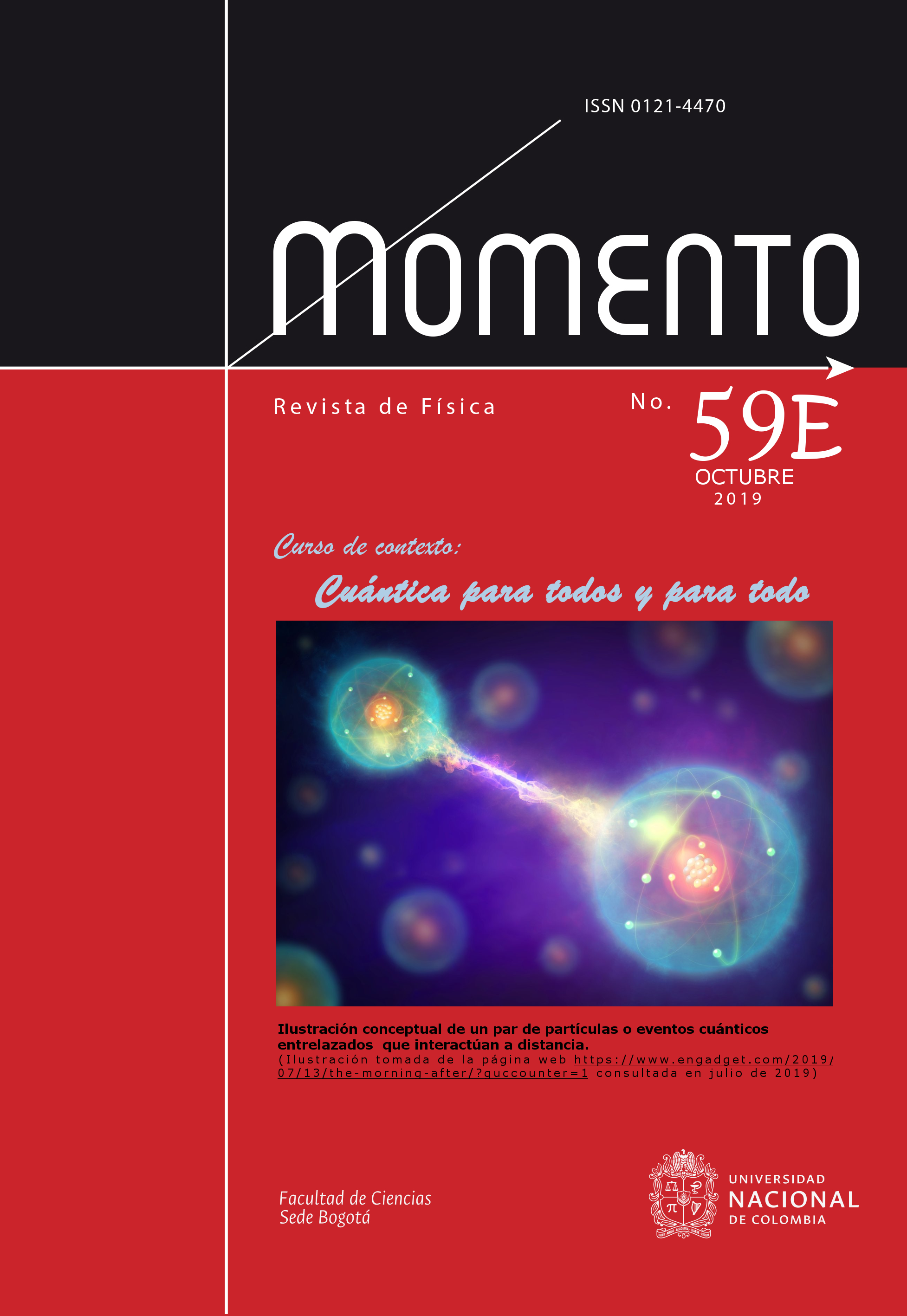FÍSICA CUÁNTICA Y RELATIVIDAD AL SERVICIO DE LA MEDICINA: IMÁGENES DIAGNÓSTICAS POR TOMOGRAFÍA DE EMISIÓN DE POSITRONES (PET)
QUANTUM PHYSICS AND RELATIVITY AT THE SERVICE OF MEDICINE: DIAGNOSTIC IMAGES BY POSITRON EMISSION TOMOGRAPHY (PET)
DOI:
https://doi.org/10.15446/mo.n59E.81626Keywords:
Tomografía de emisión de positrones, antimateria, fuentes radiactivas imágenes médicas aniquilación de positrones. (es)Positron emission tomography, antimatter, radioactive sources, medical imaging, positron annihilation. (en)
Downloads
One of the most amazing and enigmatic discoveries in quantum physics was the prediction and later discovery of antimatter, that consists of particles with properties opposite to those of matter, as consequence, when they meet they annihilate, transforming into energy in the form of gamma radiation, according to the famous Einstein’s formula: E = mc2. This property of annihilation and consequent production of gamma radiation, with specific properties, is used in the medical imaging technique called “Positron Emission Tomography”, abbreviated as PET. Nowadays several laboratories and clinical centers possess this kind of facilities and daily perform tents of exams and medical images making use of antimatter, quantum physics and relativity. In this article we review shortly the physical foundations of PET technique as well as some of the main working characteristics and some applications in medical diagnostics.
References
P.A.M. Dirac, The Quantum Theory of the Electron, Proc. Roy. Soc. London A 117,778(1928)610.
W. Shockley, Electrons and Holes in Semiconductors, Princeton, NJ. Van Nostrand, 1950.
C. D. Anderson, Phys. Rev., The Positive Electron, 43, 6(1933)491.
O. Chamberlain, E. Segrè, C. Wiegand and T. Ypsilantis, Observation of Antiprotons, Phys. Rev. 100(1955)947.
B. Cork, G. Lambertson, O. Piccioni and William A. Wenzel, Antineutrons Produced from Antiprotons in Charge-Exchange Collisions, Phys. Rev. 104(1956)1193.
Massam T., Muller T., Righini B. et al., Experimental Observation of Antideuteron Production, Nuovo Cim. 39(1965)10.
D. E. Dorfan, J. Eades, L. M. Lederman, W. Lee, and C. C. Ting, Observation of Antideuterons, Phys. Rev. Lett. 14(1965)1003.
G. Baur et. al., Production of Antihydrogen, Physics Letters B 368(1996)251.
G. Blanford, et al., Observation of Atomic Antihydrogen, Phys. Rev. Lett. 80(1998)3037.
F. Joliot and I. Curie, Artificial Production of a New Kind of Radio-Element, Nature 133(1934)201.
W. R. Leo, “Techniques for Nuclear and Particle physics Experiments”, Springer Berlin (1987), sec. 2.4.
E. Lawrence and M. Livingston, The Production of High Speed Light Ions Without the Use of High Voltages, Phys. Rev. 40(1932)19.
M. Wernick y J. Aarsvold, Emmission Tomography. The Fundamentals of PET and SPECT, Elsevier Acad. Press, USA (2004).
G. L. Brownell, and W. H. Sweet, Localization of Brain Tumors with Positron Emmiters, Nucleonics 11(1953)40.
H. M. Deloar, T. Fujiwara, M. Shidahara et al. Estimation of absorbed dose for 2-[F-18]fluoro-2-deoxy-D-glucose using whole-body positron emission tomography and magnetic resonance imaging, Eur. J. Nucl. Med. 25(1998)565.
D.L. Bailey, D.W. Townsend, P.E. Valk, M.N. Maisey (eds), Positron Emission Tomography, Springer, London (2005).
T.G. Turkington, Introduction to PET instrumentation, J. Nucl. Med. Technol. 29(2001)4.
T. Jones y P. Price, Development and experimental medicine applications of PET in oncology: a historical perspective, Lancet Oncol. 13(2012)e116-25.
How to Cite
APA
ACM
ACS
ABNT
Chicago
Harvard
IEEE
MLA
Turabian
Vancouver
Download Citation
License
Copyright (c) 2019 MOMENTO

This work is licensed under a Creative Commons Attribution-NoDerivatives 4.0 International License.
Those authors who have publications with this journal, accept the following terms:
a. The authors will retain their copyright and will guarantee the publication of the first publication of their work, which will be subject to the Attribution-SinDerivar 4.0 International Creative Commons Attribution License that permits redistribution, commercial or non-commercial, As long as the Work circulates intact and unchanged, where it indicates its author and its first publication in this magazine.
b. Authors are encouraged to disseminate their work through the Internet (eg in institutional telematic files or on their website) before and during the sending process, which can produce interesting exchanges and increase appointments of the published work.



















